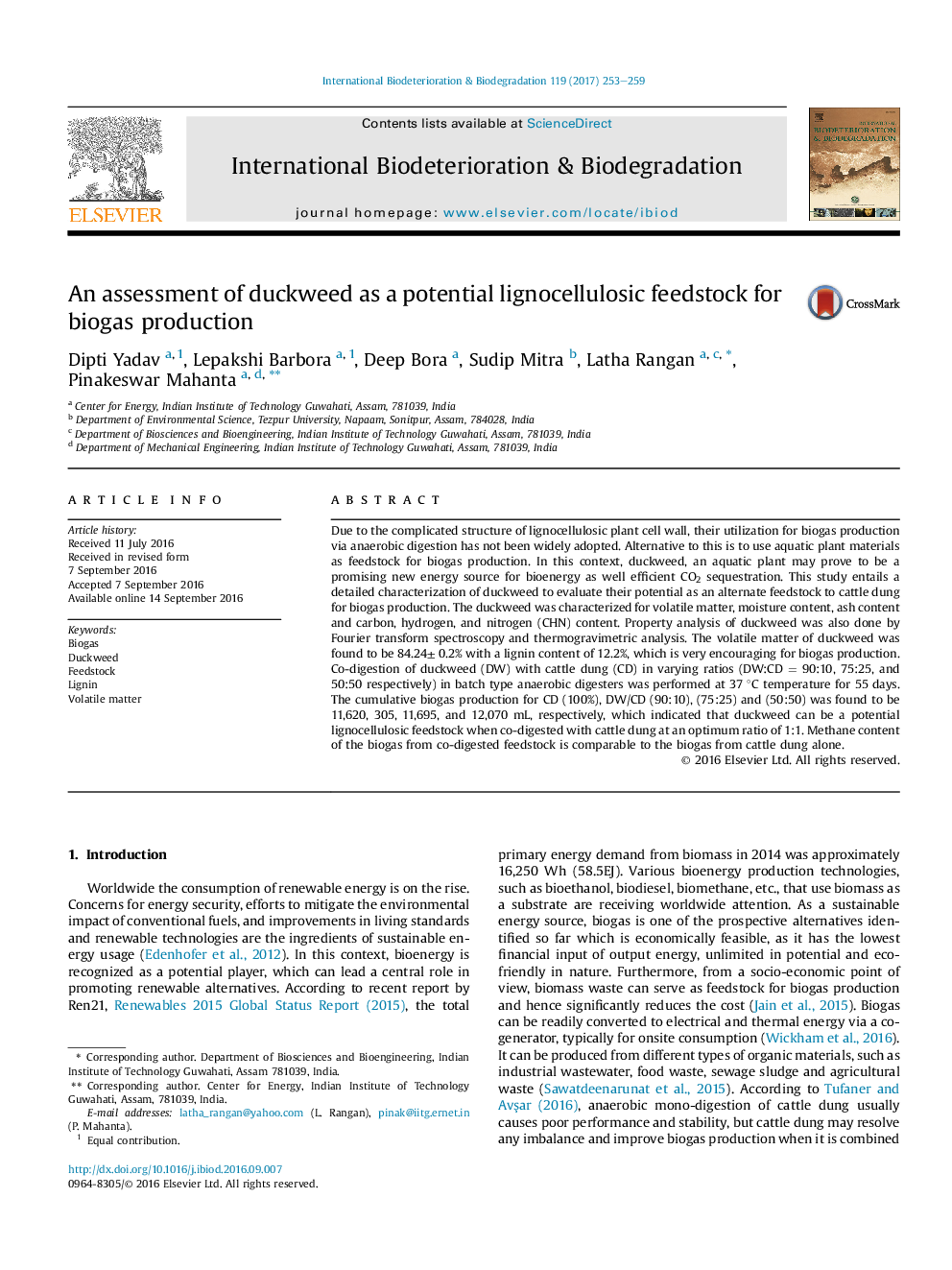| کد مقاله | کد نشریه | سال انتشار | مقاله انگلیسی | نسخه تمام متن |
|---|---|---|---|---|
| 5740451 | 1616298 | 2017 | 7 صفحه PDF | دانلود رایگان |
- Duckweed has been tested as feedstock for biogas production.
- Higher cellulose and low lignin content of duckweed indicate its potential for higher biogas production.
- Volatile matter of duckweed (84.24 ± 0.2%) with a lignin content of 12.2%, which is very promising for biogas production.
- Combination of duckweed and cattle dung @ 50:50 facilitated highest biogas production.
Due to the complicated structure of lignocellulosic plant cell wall, their utilization for biogas production via anaerobic digestion has not been widely adopted. Alternative to this is to use aquatic plant materials as feedstock for biogas production. In this context, duckweed, an aquatic plant may prove to be a promising new energy source for bioenergy as well efficient CO2 sequestration. This study entails a detailed characterization of duckweed to evaluate their potential as an alternate feedstock to cattle dung for biogas production. The duckweed was characterized for volatile matter, moisture content, ash content and carbon, hydrogen, and nitrogen (CHN) content. Property analysis of duckweed was also done by Fourier transform spectroscopy and thermogravimetric analysis. The volatile matter of duckweed was found to be 84.24± 0.2% with a lignin content of 12.2%, which is very encouraging for biogas production. Co-digestion of duckweed (DW) with cattle dung (CD) in varying ratios (DW:CD = 90:10, 75:25, and 50:50 respectively) in batch type anaerobic digesters was performed at 37 °C temperature for 55 days. The cumulative biogas production for CD (100%), DW/CD (90:10), (75:25) and (50:50) was found to be 11,620, 305, 11,695, and 12,070 mL, respectively, which indicated that duckweed can be a potential lignocellulosic feedstock when co-digested with cattle dung at an optimum ratio of 1:1. Methane content of the biogas from co-digested feedstock is comparable to the biogas from cattle dung alone.
215
Journal: International Biodeterioration & Biodegradation - Volume 119, April 2017, Pages 253-259
